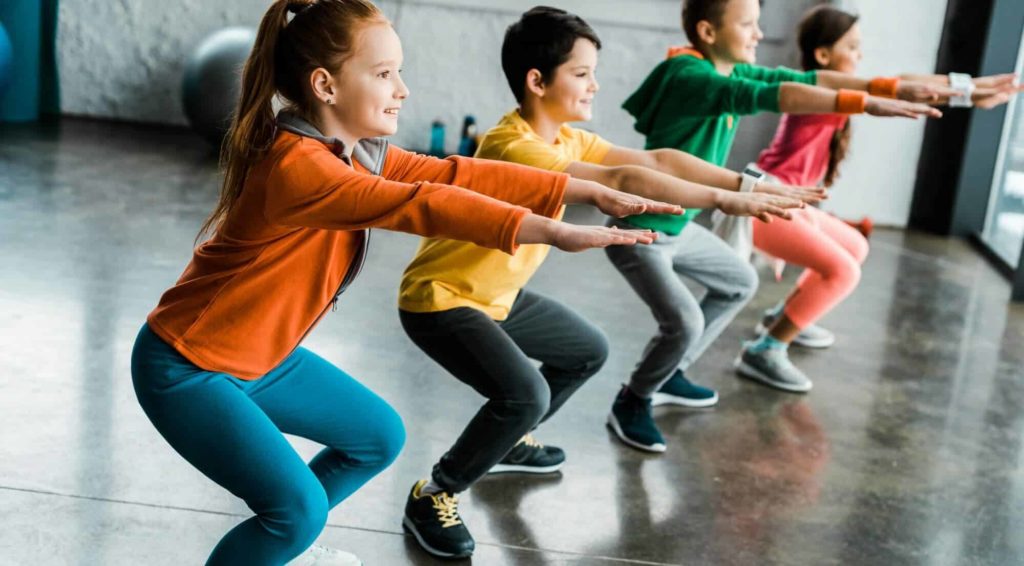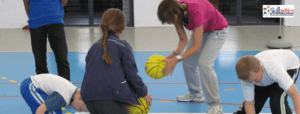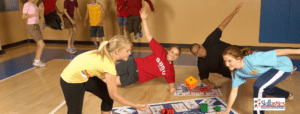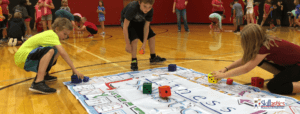Adults often remark about all the energy that children possess, so why would a child equipped with all that energy simply prefer to avoid using it? We see kids sitting around playing video games or watching TV, especially during the pandemic, and we have to wonder, why?
Fun Is A Necessary Ingredient
Adults shouldn’t assume just because children can be energetic that a child will choose to be active. Kids play. Therefore, the key ingredient for almost any child’s activity is that it must be fun.
When a child is asked to perform a drill of sit-ups, pushups, and jumping, they may have the energy to complete the tasks, but who wants to do drills? Adults will accomplish tasks because they are responsible, and their brain works to weigh decisions about their well being against the doughnut they had for breakfast. But children will look at the same tasks and wonder, “What’s in it for me?”
Instead of drills, games allow for more involvement for the same physical tasks. For example, set tasks to music, create a race against time to complete them all, or put the tasks into a relay race of teams. Suddenly, those same reluctant children will see something in it for them – it will be fun.
Other Reasons for Reluctance
Sometimes, there are some deeper reasons that children will resist physical activity. Any of the following causes will prevent a child from enjoying exercise:
- PE Teachers who seem to cater to athletes. When children feel that their teacher only gives attention to capable students, they may mentally check out. Teachers must respect all skill levels and recognize that building a skill takes time.
- Children who are not athletically inclined. No matter how much time a teacher or child devotes themselves to exercise, some may never achieve competitive athleticism. Some children just have no interest in being athletic. For these kids, physical activity skills feel like a waste of time. They need to see other reasons to engage in the activity other than good health or ability.
- The fear of being embarrassed. Some children do not want to risk any activity because they want to avoid standing out from the crowd in a bad way. When a task is new or requires practice, they may feel foolish doing it and then be embarrassed. They fear being the worst, and they are afraid to try in case their fears come true. Anxious students need a way to lower the pressure.
Keeping All Students in Mind
Skillastics® created a way to reach all students. Our activities build a fun component into the products for the straightforward reason that kids will like it. They will be active while enjoying games and activities designed to be engaging and fun. Skillastics® knows the different ways kids operate. The lead-up games and types of activities in Skillastics® level the competition so all can enjoy the activities. The skills build high-level ability within a low-risk playing field. Everyone can participate, enjoy, and grow from physical activity with Skillastics®.
About the Author
Sandy Slade is the CEO & Founder of Skillastics®, the #1 on-site and virtual physical activity resource for groups of children of all sizes. The on-site programs are designed around Skillatsics Activity Kits. These Activity kits include an innovative technique of play, executed on an oversize mat, where up to 100 children can play at one time.
The virtual programs provide students with an amazing variety of physical activity experiences that consist of 30 days of content lasting 30-40 minutes a day taught by national experts.
Skillastics® is enjoyed by over 10 million students in more than 25,000 Physical Education and After School settings nationwide.
For more information, email info@skillastics.com or check out www.skillastics.com.




